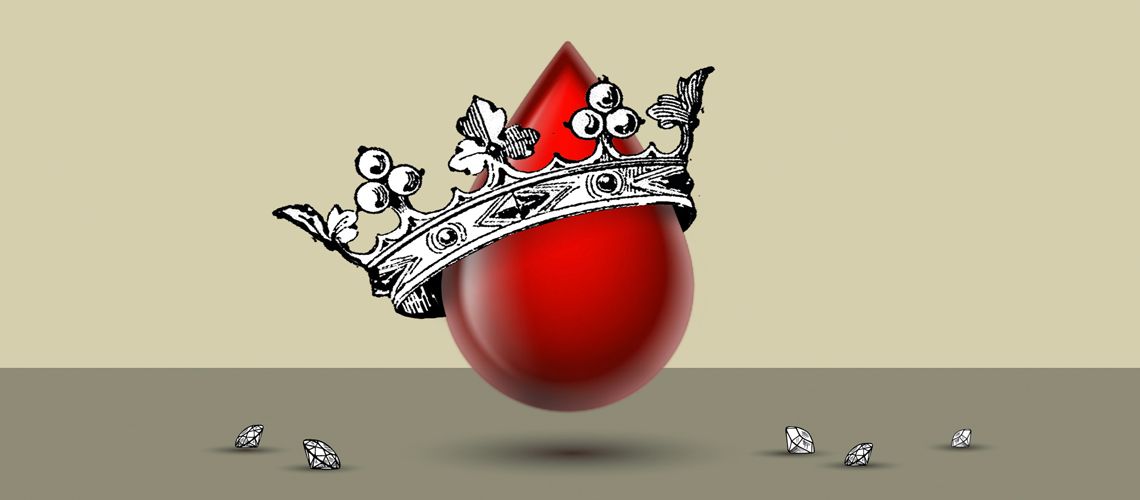

Study Shows Underuse of Blood Morphology in Veterinary Medicine
In veterinary medicine, it's commonly taught that a blood smear should be performed alongside every complete blood count (CBC). However, in reality, due to the busy nature of veterinary practice, many clinicians rely solely on the results of the automated hematology analyzer without clinical pathology. While this approach can save time and money, it may not always provide the necessary information for an accurate diagnosis. Until recently, there were no established blood morphology guidelines on when a more detailed investigation, such as a blood smear review, should be performed. However, a new study in veterinary medicine has shown that reviewing blood morphology in conjunction with a CBC can provide valuable information and improve diagnostic accuracy, potentially leading to better patient outcomes.
Peripheral Blood Smear Study
Simply put, a peripheral blood smear can be used to clarify and confirm the results obtained from automated hematology analyzers. But, it also identifies cancerous cells, blood morphology, infectious agents, and other changes automated analyzers cannot definitively classify. In 2023, IDEXX conducted a study1 driven by the lack of evidence currently in the veterinary field on when a blood smear is most helpful. 4176 blood smear reviews, submitted to the IDEXX reference laboratories by veterinarians and associated with a CBC performed on an in-clinic hematology analyzer, were analyzed.
Study Finds Underuse of Blood Morphology
The study found significant findings that can be helpful to veterinarians. It emphasized the practical value of conducting a blood smear pathology review in addition to a complete blood count analysis. It also highlighted when blood morphology has the most potential to provide valuable information, helping clinicians to not overlook this analysis when it matters most.
Specifically, the study found the following:
- Less than 1% of veterinarians: The study revealed that less than 1% of veterinarians requested a blood smear review associated with a CBC indicating that blood morphology is underutilized for patients.
- Analyzer prompts and abnormal cell counts: It found that common reasons for performing blood films include in response to prompted analyzer results (automated messages that suggest a blood film assessment) and abnormal cell counts.
- Clinically valuable findings: Smear reviews associated with instrument prompts had a high percentage of clinically valuable comments (80%) as well as those with cytopenia (76.7%) and cytosis (85.4%).
- Findings with no prompts or abnormal cell counts: Even in smear reviews without instrument prompts or abnormal cell counts (17.1%), 48.6% had clinically valuable comments, with
- Platelet clumping and toxic neutrophils: The most common clinically valuable comments for all blood smear reviews were associated with platelet clumping (clarifying the automated platelet count) and with toxic change of neutrophils (an indication of accelerated neutrophil production in the bone marrow).
Moreover, the study found that ordering a blood smear review following an in-clinic CBC gave a high yield of clinically valuable results, particularly when the corresponding CBC had instrument flags or aberrant cell counts.

Case Selection for Blood Smears
As an educator and veterinarian, I firmly believe there are two reasons to perform a diagnostic test: either the result will help lead to a diagnosis or a more focused next step, or the family requests the knowledge. When we specifically think about maximizing the clinical value from a CBC, consider three important takeaways:
- Thrombocytopenia and anemia were the most common cell count abnormalities. Clinically, these are often suspected by history of physical exam findings but can be surprising results. In either scenario, further classification is extremely helpful in diagnosing the underlying cause and creating a focused treatment plan.
- Platelet clumping and left shift were the most common instrument prompts. Both designate potentially critical information about a patient, but the diagnostic journeys for each are very different. A blood smear that validates platelet clumping offers that needed peace of mind to the clinician and the client. A blood smear demonstrating a left shift reinforces an impetus for more immediate investigation.
- When in doubt, perform a blood smear. If blood smears are not a part of the hematology diagnostic toolbox in your practice, adding them to a patient's diagnostic plan when CBC abnormalities are found on an automatic analyzer yields clinically valuable comments. The study found this true in >75% of cases with complete blood count abnormalities and nearly 50% without any indication on the CBC.
Blood Morphology is Never a Wrong Choice
As veterinarians, it's crucial to make well-informed decisions about which diagnostic tests to recommend based on the patient's medical history and physical examination. In today's exam room, a shared decision-making approach can be used to actively involve the client and consider the full spectrum of care. This 2023 study has highlighted the importance of blood morphology on a blood smear to yield clinically valuable information. This test is the only one that can provide objective information about a patient's bone marrow microenvironment. It can help identify a patient's immediate need for further investigation when a left shift is present, focus on additional diagnostics, and objectively monitor treatment progress. Whenever an interpretive prompt or cell count abnormality is present, a blood smear is never a wrong choice.
References:
1. Michael H, Drake C, Yore K. Clinically valuable comments were common on veterinarian ordered blood smear review following in-clinic complete blood count [abstract]. American College of Veterinary Pathology Annual Meeting: October 29, 2023: Chicago, IL.







